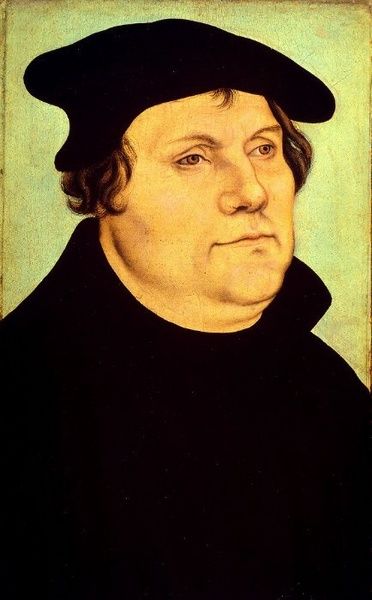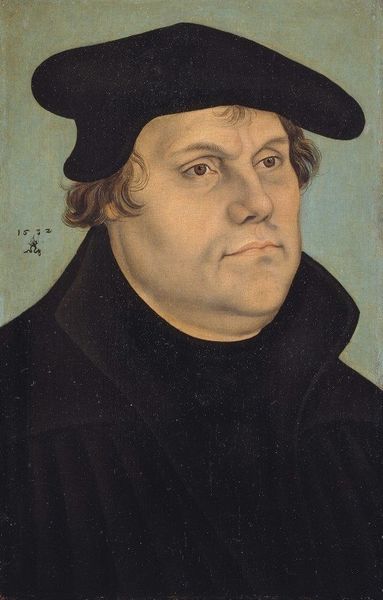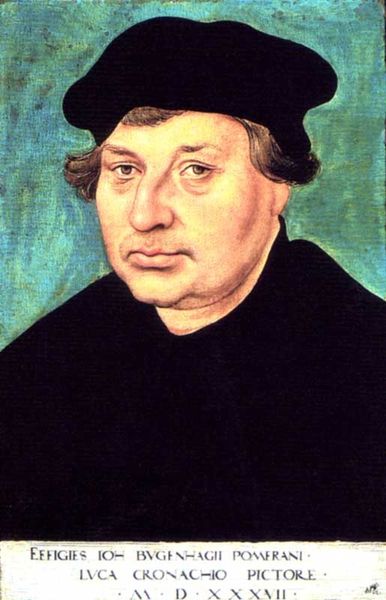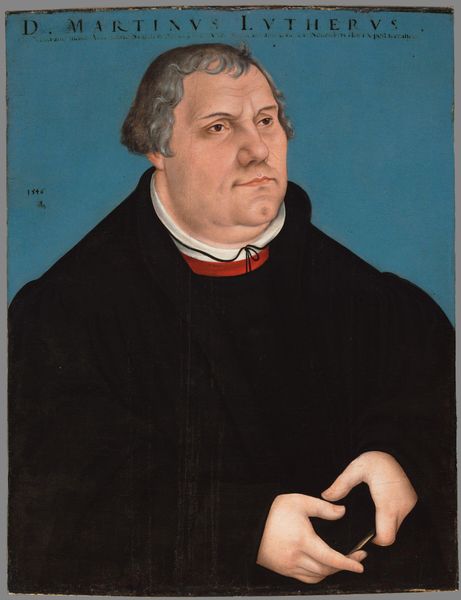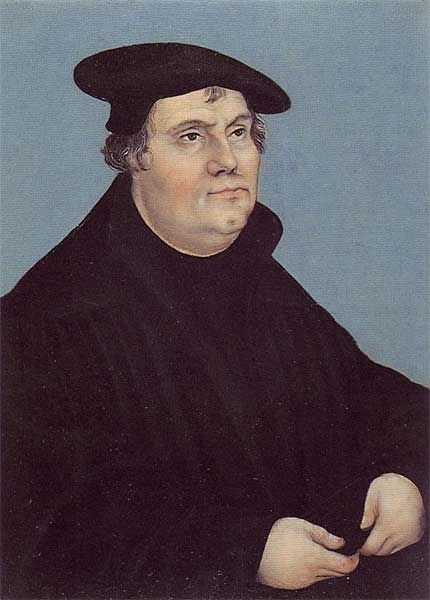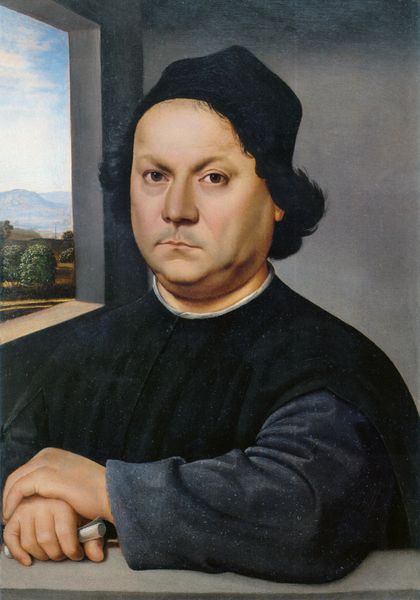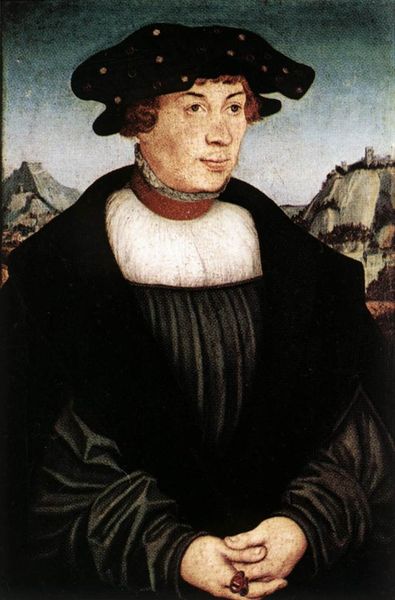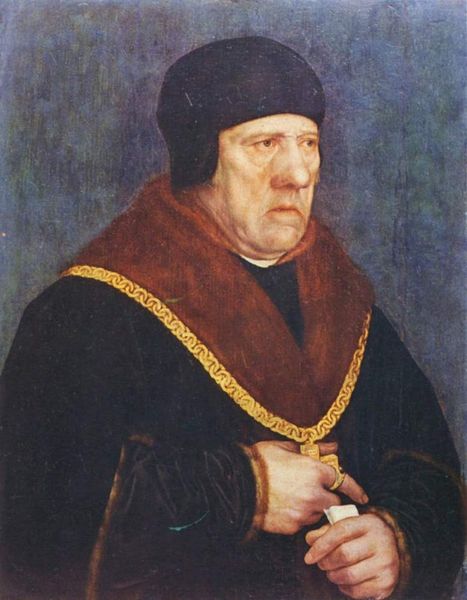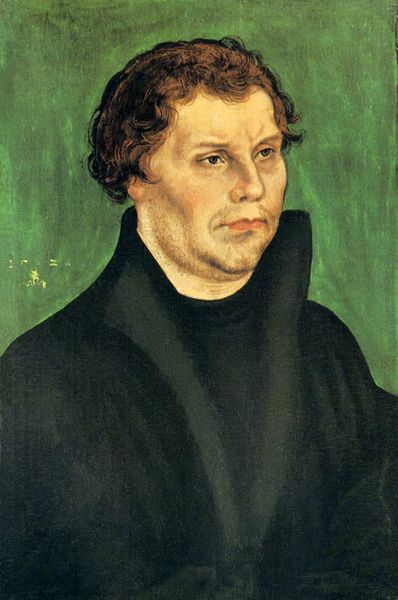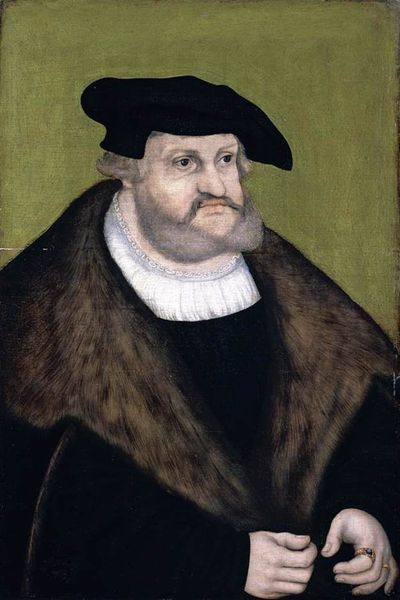
painting, oil-paint
#
portrait
#
painting
#
oil-paint
#
history-painting
#
northern-renaissance
#
realism
Copyright: Public domain
Editor: Here we have Lucas Cranach the Elder's oil on wood painting, "Martin Luther," created in 1532. It’s struck me as quite an austere and formal composition. What do you make of this work? Curator: The compelling aspects of this portrait reside in the interplay between the objective and the subjective. Note how Cranach meticulously renders the textures of Luther’s garments, contrasting the soft fur lining with the stark, matte black of his robe. This tactile realism grounds the figure. However, observe also how the soft, diffused lighting models Luther’s face, creating a sense of interiority, a psychological space, if you will. Do you perceive this tension between surface detail and implied depth? Editor: Yes, I see it. It's almost as if the external details serve to emphasize the internal…gravity, perhaps? The Latin inscription at the top adds to this, too. It frames the composition. Curator: Precisely. The inscription, functioning as a textual element within the visual field, serves to further the overall design. Also note Cranach's restrained color palette, composed mostly of earth tones. This monochromatic scheme serves to isolate and foreground the chromatic highlights in Luther's face, drawing the eye to the subtle nuances of his expression. Editor: It does seem everything in the image serves to drive your eye back to Luther’s face. Curator: And what do you suppose might be the implication of this formal strategy? How do the details create focus? Editor: It suggests that Luther’s significance is as a man of ideas, more than a man of action or outward display. Curator: An insightful observation. The formal elements of Cranach’s portrait work synergistically to convey a message of intellectual authority and spiritual resolve. The quiet composition speaks volumes. Editor: I see now how Cranach uses form to communicate Luther’s character and significance. Thanks for this close look!
Comments
No comments
Be the first to comment and join the conversation on the ultimate creative platform.
